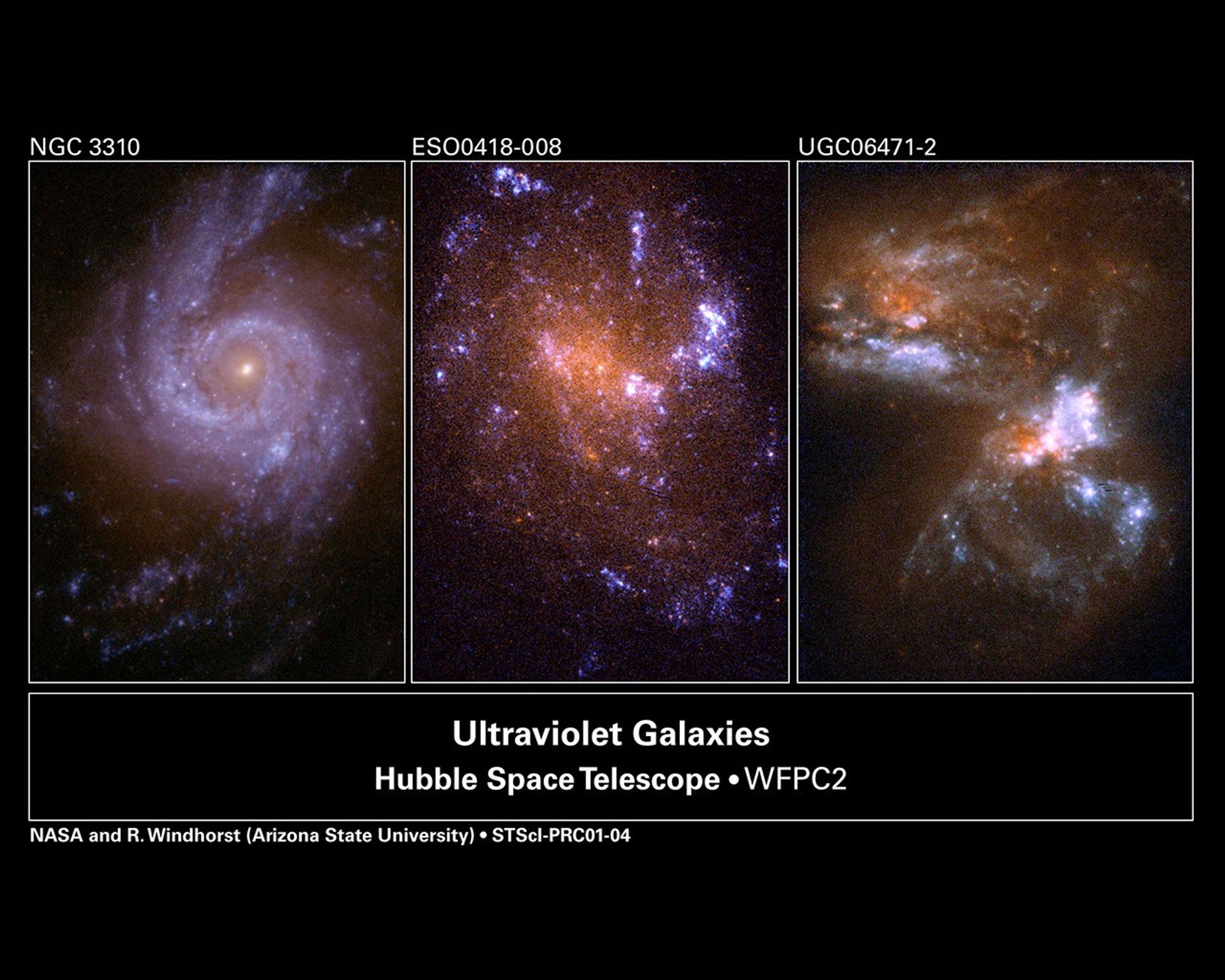1 min read
A Cosmic Collision Between Two Galaxies, UGC 06471 and UGC 06472

About the Object
- R.A. PositionR.A. PositionRight ascension – analogous to longitude – is one component of an object's position.11h 28m 35.27s
- Dec. PositionDec. PositionDeclination – analogous to latitude – is one component of an object's position.+58°33' 50.4"
- ConstellationConstellationOne of 88 recognized regions of the celestial sphere in which the object appears.Ursa Major
- DistanceDistanceThe physical distance from Earth to the astronomical object. Distances within our solar system are usually measured in Astronomical Units (AU). Distances between stars are usually measured in light-years. Interstellar distances can also be measured in parsecs.About 45 Mpc (145 million light-years)
- DimensionsDimensionsThe physical size of the object or the apparent angle it subtends on the sky.The galaxy is about 17.3 kpc (56,000 light-years) across.
About the Data
- Data DescriptionData DescriptionProposal: A description of the observations, their scientific justification, and the links to the data available in the science archive.
Science Team: The astronomers who planned the observations and analyzed the data. "PI" refers to the Principal Investigator.Principal Astronomers: V. Taylor, R. Windhorst (ASU), J. Hibbard (NRAO), and The Hubble "Mid-UV" Team: R. Windhorst (PI), C. Chiarenza, S. Odewahn, and V. Taylor (ASU); R. de Grijs (Univ. of Cambridge); R. de Jong (Univ. of Arizona); P. Eskridge, J.Frogel (Ohio State Univ.); J. Gallagher, and C. Conselice, (Univ. of Wisconsin, Madison); J. Hibbard, L.D. Matthews (NRAO); J. MacKenty (STScI); and R. O'Connell (Univ. of Virginia). - InstrumentInstrumentThe science instrument used to produce the data.HST>WFPC2
- Exposure DatesExposure DatesThe date(s) that the telescope made its observations and the total exposure time.July 11, 2000, Exposure Time: 53 minutes
- FiltersFiltersThe camera filters that were used in the science observations.F255W (mid-UV) F300W (mid-UV) F814W (I)
- Object NameObject NameA name or catalog number that astronomers use to identify an astronomical object.UGC 06471, UGC 06472
- Object DescriptionObject DescriptionThe type of astronomical object.Pair of merging galaxies
- Release DateJanuary 11, 2001
- Science ReleaseHubble’s Ultraviolet Views of Nearby Galaxies Yield Clues to Early Universe
- CreditNASA, Rogier Windhorst (Arizona State University, Tempe, AZ), and the Hubble mid-UV team

Color Info
Color InfoA brief description of the methods used to convert telescope data into the color image being presented.
Blue: F255W (mid-UV) Green: F300W (mid-UV) Red: F814W (I)
Related Images & Videos

Hubble's Ultraviolet Views of Nearby Galaxies Yield Clues to Early Universe
Astronomers are using these three NASA Hubble Space Telescope images to help tackle the question of why distant galaxies have such odd shapes, appearing markedly different from the typical elliptical and spiral galaxies seen in the nearby universe. Do faraway galaxies look weird...
Share
Details
Last Updated
Aug 17, 2025
Contact
Media
Claire Andreoli
NASA’s Goddard Space Flight Center
Greenbelt, Maryland
claire.andreoli@nasa.gov

































